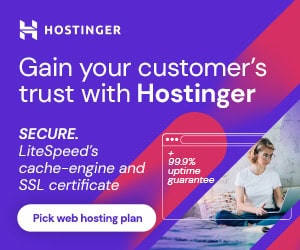Time is money in the high-speed world of online commerce. A sluggish Magento store annoys customers as well as drives them away. Delays as little as a fraction of a second can increase bounce rates, slow down search performance, and hurt your bottom line.
To stay competitive, you need a site that is fast, stable, and scalable. In this ultimate guide, we’re going to provide you with the Magento development best practices you need to optimize performance, improve user experience, and boost conversions.
Set Up Your Server for Speed and Stability
Your Magento store’s availability and performance start with the right hosting infrastructure. Your role, thus, is to choose a platform-tuned host provider with a deep understanding of Magento’s complexity and performance expectations.
The Perspective team recommends prioritizing vendors who follow Magento coding standards and offer key performance features such as high-level caching, PHP tuning, and optimized database handling.
Your next step is to verify that your potential hosting provider uses a modern server stack: LAMP/LNMP stack, PHP 8.3 or later, MySQL 8.4 or MariaDB 11.4, and Composer.
Other important things you should prioritize are scalability and flexibility. Your hosting provider must have seamless upgrades and auto-scaling to handle traffic surges and future expansions.
Finally, round-the-clock support is essential for fast resolution of platform-related issues. If you need expert help implementing these technical requirements, consider working with a Magento web development agency that understands performance tuning at scale.
Improve Magento Performance with In-Built Tools and Configuration
Magento is a powerful e-commerce platform with robust performance monitoring and enhancement capabilities. Take Magento Profiler, for example. This debugger for performance will help you calculate the duration it takes to execute backend activities, whether it is layout rendering or database queries. Using Magento Profiler, you can identify performance slowdowns at the early stages and fix them before they affect your users.
However, monitoring alone is insufficient. For optimal performance, you must have your Magento store in production mode.
Production mode is different from production or even default and developer modes as it compiles static files, minimizes overhead, and speeds up load time. Just remember to leave logging and error reporting active so that you can detect and fix issues without slowing your site.
Master Full Page Caching and Efficient Indexing
Discussing Magento 2 best practices, we cannot but mention full-page cache and indexing. The former is essential to reducing load times, especially for high-traffic stores. It caches fully rendered HTML pages so that Magento will not need to re-build them upon each visit. You can use the built-in FPC or get even better performance with tools like Varnish.
In the meantime, indexing is also crucial. Magento uses indexes to assist in accelerating page database queries on catalogs, prices, and other dynamic data. Indexing must be set to “Update by Schedule” (and not on “On Save”) in production environments to avoid slowness for product or category updates.
Optimize CSS and JS
Big, un-minimized JavaScript and CSS files could be one of the many reasons your website is taking so long to load. Magento assists you in combining, minimizing, and bundling like that, which reduces file size and browser requests.
Minification eliminates redundant characters (spaces, comments), and bundling combines several files into one. And include async loading of JavaScript to keep scripts from making the page slower, enabling important content to load sooner.
Compress and Optimize Visual Content
Large file images are a common reason for slow loading. To make your site load fast, use next-gen formats like WebP. They keep quality at the top level and file size at the bottom.
Use TinyPNG or ImageOptim to compress images before you upload them. Depending on your needs, apply lossless (no apparent loss of quality) or lossy (lower file size) compression.
Magento also contains lazy loading, where images outside of view are loaded only when scrolling. This reduces first-page weight and makes perceived load faster.
Use a Content Delivery Network (CDN)
A Content Delivery Network (CDN) stores your website’s static resources (like images, CSS, and JS) in a group of servers that are spread across different geographical locations.
When users visit your site, the CDN serves assets from the nearest server, reducing latency and accelerating load time.
Add a tried-and-tested CDN like Cloudflare, Fastly, or AWS CloudFront to your Magento setup. CDNs also reduce server load and provide other benefits like DDoS protection and SSL optimization.
Audit and Clean Up Third-Party Extensions
Magento’s modular architecture is convenient for adding features—but having too many extensions can slow down performance. Slowly or poorly coded extensions tend to conflict and slow things down.
Periodically audit all installed extensions. Uninstall any that are not needed or no longer supported. Select Magento-certified or highly rated extensions where possible.
Test new or updated extensions in a staging environment first before deploying them live.
Monitor Store Performance with the Right Tools
Performance optimization is a continuous process. Use monitoring software to continuously check how your store is performing.
- New Relic. Built to work with Magento stores, this platform offers comprehensive performance tracking and detailed diagnostic capabilities.
- GTmetrix / Google PageSpeed Insights. These tools, available for Magento, help analyze and improve website performance, especially in terms of speed and user experience.
- Blackfire. With Magento support, this PHP profiler illustrates how your coding practices influence performance.
Conclusion
Improving your Magento store is not a static affair. It’s a never-ending commitment to velocity, stability, and customer satisfaction. With search engines and customers both prioritizing performance, these Magento development best practices are your ticket to staying one step ahead.
From server setup to frontend optimization and extension management, each process guarantees a faster, more scalable shopping experience.
As your business expands, ongoing monitoring and auditing will keep you in top form. And if you think long-term, investigate the latest cutting-edge technologies such as headless Magento or Progressive Web Apps (PWA) for even more agility and velocity.








